This is an amazing hobby and has many sides to it, but as anything it’s far from perfect. A Twitter challenge by Ria N2RJ (@RiaJairam) made me think about what can be improved about Amateur Radio.
What is Amateur Radio, really ?
First of all, Amateur Radio is constantly changing, people are in it for different reasons and each think it is a sum of different things.
The essence of AR used to be experimentation with radio waves; this is the era that gave its fame as a technically spearheading hobby, around the middle of the 20th century. You would build your own equipment from spare parts retrieved from TVs, or if you were lucky you would have access to some factory-built kits that you still needed to spend days to get going. This “romantic” era was very significant and equally powerful for those that took part; it established a high level of expectations & rewards from the hobby which later generations struggled to reach. Many mentalities are still stuck in that past (and those technical solutions).
The first shift came when affordable, mass-produced equipment became available (1970s ?). It opened up the hobby to a much larger audience, maybe less technically inclined; this boosted local repeaters, nets and the communication & social side of the hobby. People weren’t in it for experimentation & learning anymore, they’re in it for talking to eachother. You’re part of a world-wide exclusive club, fire up your handheld in any city you travel to and you’ll be in touch with your people in no-time.
The second shift is going on right now and is about internet (we are in fact in the middle of the 5th industrial revolution, but who’s counting anymore). This replaced AR as a means of communication; there is nothing cool about carrying a handheld when everyone has smartphones. This put AR in a crisis as we’re searching for ways to stay relevant. Some are trying to make it useful as an emergency service, which has good PR value but has limited (and quickly diminishing) applicability. Some are going back to the highly technical branch of the hobby, but we are so behind the current communications technology that it will take decades to catch up. Some are trying to diversify it by coming up with different activities that also include AR, like SOTA, POTA etc. It is still not very clear what will Amateur Radio be in the following decades.
Is there really anything wrong with Amateur Radio ?
There is always something wrong; and it has to be, otherwise we wouldn’t move forward.
1. Cost of entry & age. The money/time/energy triangle is relevant here, young people need the hobby to be affordable in terms of money, the middle-aged group needs quick rewards and seniors appreciate less challenging activities. As the equipment market is driven by profit, the first age category is being mostly overlooked, resulting in a seriously aged Amateur Radio population. Luckily some key products are now adressing this, but we definitely could use more of the likes of uBITX, Baofeng and RTL-SDR to fix the age imbalance. What to do ? Give much more visibility to kits and affordable products instead or praising every “bench-queen” US$ 5,000 transceiver from the established brands. Promote radio enjoyment at every level.
2. Attractiveness (or “the cool factor”). This results from the age imbalance, as the older age categories are more likely to promote outdated “selling points”. We do have some fascinating activities and technologies (space communications, SDR, digital modes, SOTA etc) and we could definitely use more, but we need the right people to make them look cool. What to do ? Have young spokespersons, involve them in decision making, let them have their say about what they like/need/want.
3. Gatekeeping. For a group of people interested in communications technology, Radio Amateurs are pretty bad communicators; in fact, the pursuit of a hobby is in many cases just an effort to relate to people. We feel we’re part of a special club and we challenge others that want to join in an effort to feel better about ourselves and also artificially give more value to our own membership to that club. This comes from a place of frustration which quickly becomes elitism. What to do ? This is hard to fight against, as it requires for the entire hobby to be more enjoyable so it attracts less frustration. I guess campaigning that “gate keeping is not cool” and massively cutting jargon should be high on the list of things to improve.
4. Diversity. This is something that is so obvious and yet so ignored. For such a world-wide hobby, AR has one of the least diverse communities and part of it comes from that gate keeping. Looking around, I can easily see how women or people of a different ethnicity might feel uncomfortable among the average AR community. What to do ? Apart from a general direction of promoting diversity, maybe we should all point out things that stand out. Using women as eye candy in your Youtube videos is sad and discussing “how hot the ladies in the Icom IC-705 video are” is a sign of an emotionally undeveloped personality; don’t be that person, you’re embarrassing everyone.
5. General public perception. The fact that Amateur Radio has so many sides to it is also a disadvantage. We do have a PR problem and every time someone meets a Radio Amateur they see a very narrow side of it, that mostly confirms their prejudice set by “an uncle that had a CB too” or a movie with a sad, nerdy, lonely guy playing with his radio. What to do ? Stop showing people keying CW at 40wpm as if that defines our hobby; stop talking about the F-layer and how to calculate a dipole length. Focus on a simpler and clearer message about what we do, that is interesting and relevant to a wider audience. Get people to watch Contact and the ad with the kid that builds a station and talks to astronauts. Educate instead of focusing on showing off your knowledge and jargon.
Are there other issues ? Certainly. These stand out for me. Let me know what’s your opinion in the comments.

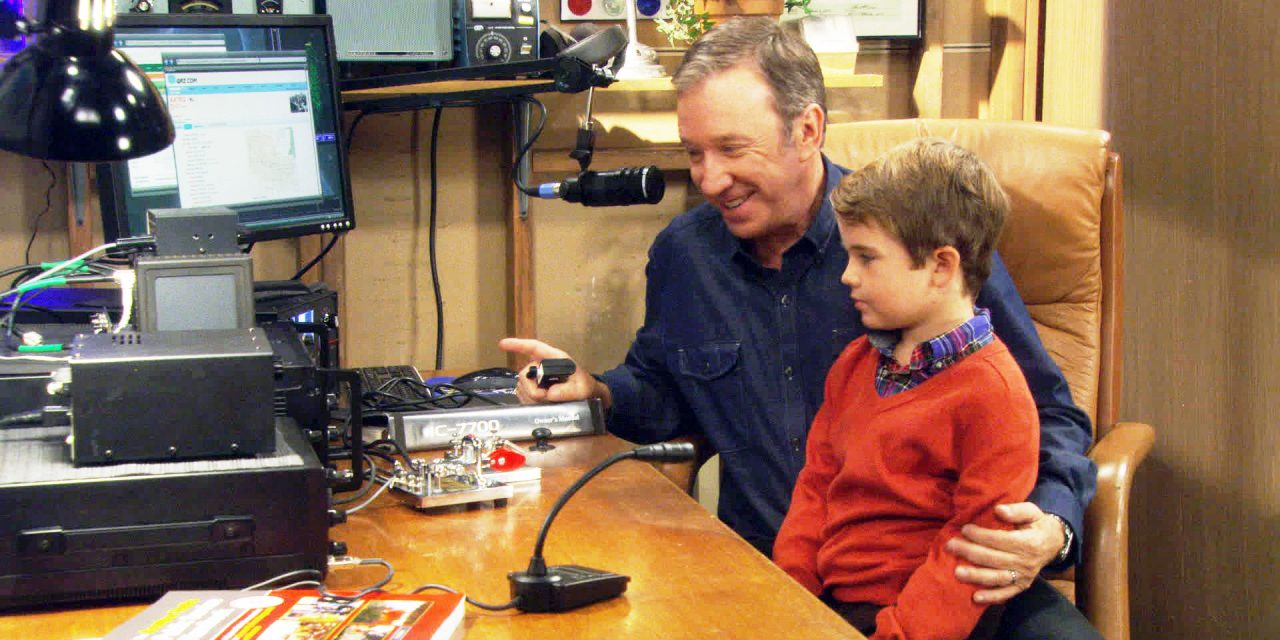
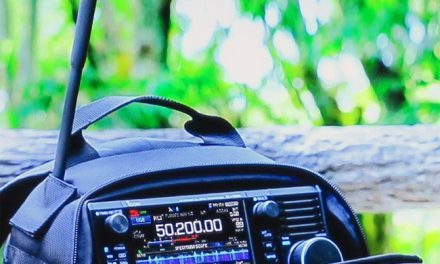
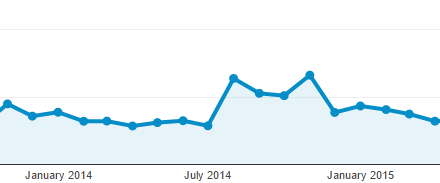

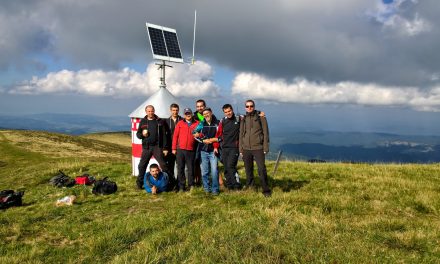
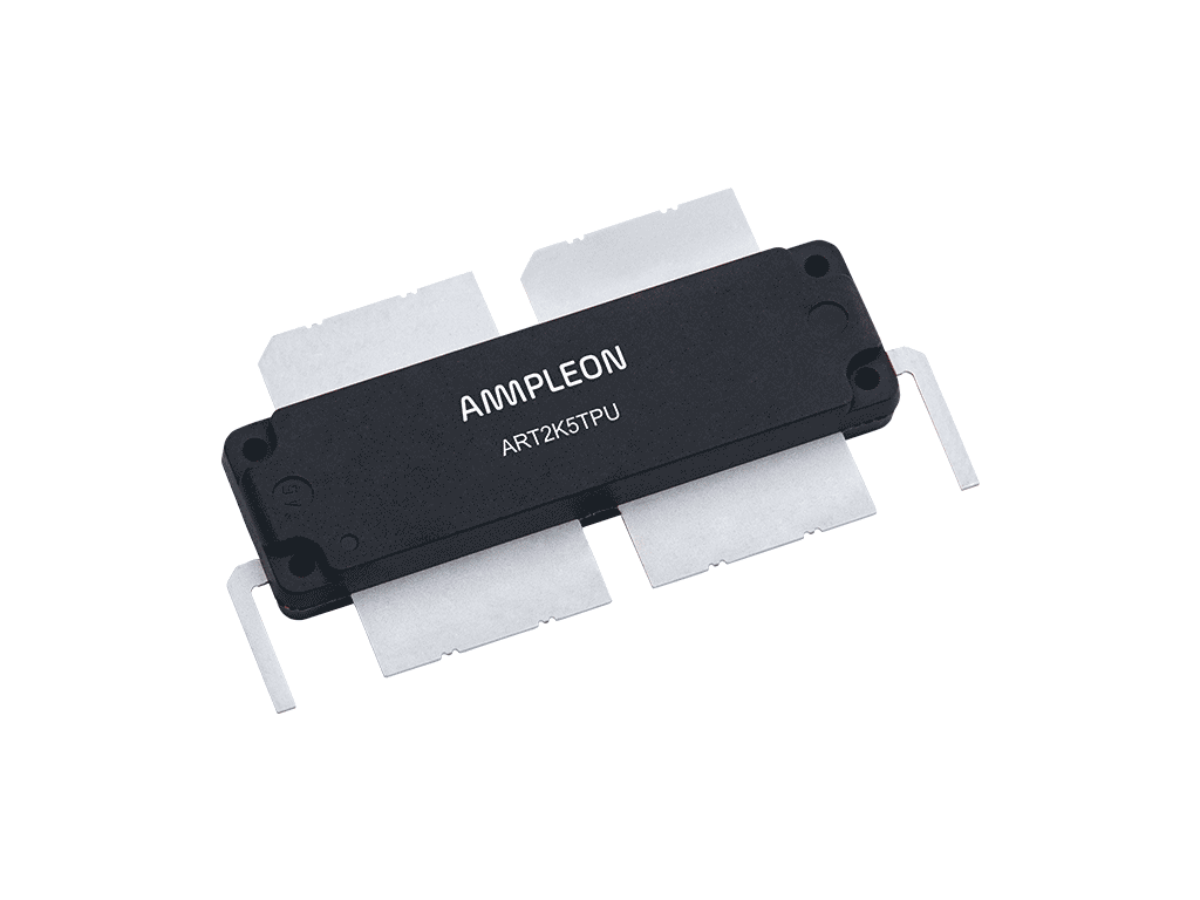
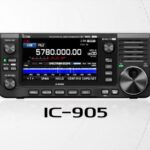
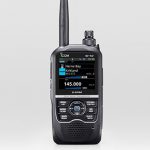
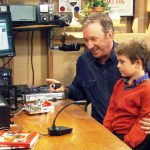
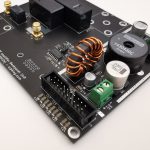
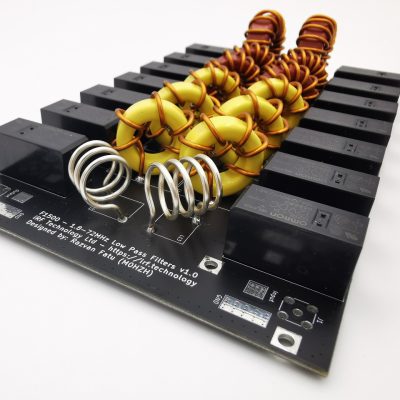
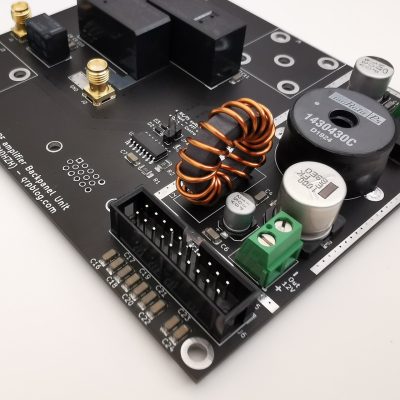
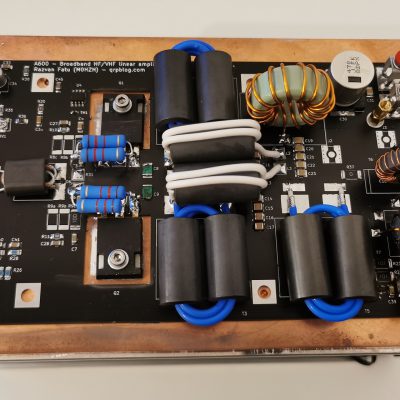
I would add another aspect of amateur radio that I believe is very important and often overlooked.
Civilization depends increasingly on technologies with their development dominated by large corporations and governments. Because of this, the dissemination of new technology tends to be very consumer-oriented and centralized. Instead of individual citizens being active participants in the development of technology, citizens are disengaged from the process of innovation.
This was not always the case, and in the early days of amateur radio, there was so much to discover that an amateur radio operator could easily be on the forefront of communications invention.
I think amateur radio still has an important role to play to reengage individual creators with the process of technological innovation. It is crucial for a free and democratic society that individuals are empowered to both understand, manipulate, and advance the technology on which their welfare and happiness depends. Any society which has its citizens dependent on an elite to provide the technology needed for their health and welfare is not free.
Of course, this aspect of maintaining a democracy is not exclusive to the amateur service alone, but as the communication airwaves are a contentious resource, it is important that access to this resource is preserved for the purposes of education and invention of private citizens.
Large corporations no longer to research and development, like in the 20th century.
Nowadays, large corporations to aqui-hire. The buy out startups and then, either integrate their research, or simply sit on it, to stifle Innovation.
Apple has acquired a popular weather app and killed off the Android version. A tactic they have done many times.
So many of these innovations can be traced back to amateur radio. The biggest secret of ww2, the radio proximity fuse, was developed with the help of radio hams. The world needs technical hobbies, like amateur radio.
> Have young spokespersons, involve them in decision making, let them have their say about what they like/need/want.
This resonates with me. I’ve been playing this angle for a long time (almost 10 years) and it’s been incredibly difficult to get a word in edgewise, with all of the political-type drama and infighting that plagues radio organizations and societies like IARU and ARRL. I’ve been fortunate to have a pretty big amplifier on my blog, youtube channel, and other venues like the Young Amateurs Radio Club (YARC) and Youth on the Air (YOTA), so things are a-changing rapidly!
This was a really well spoken and thought out contribution. Thank you!
Thank you Sterling. “Millennials Are Killing Ham Radio” was inspirational, by the way.
Excellent article… This is a topic I’ve been thinking of lately, although not with the author’s focus and intensity. I agree with every one of his points! As one who’s tried to get my sons interested in the hobby (and they are both technology-savvy), I recognize the points about both the cool factor and our poor job of gatekeeping.
As an aside, young people and those just entering are not the only ones who’d benefit from ‘kits and affordable products.’ When I see some of the rigs on the market today, I realize that I could get one and NEVER master its features (but, that’s a joke, because I can’t afford even a $3,000 rig). There should be many more IC-718s and FT-450Ds, but more affordable, available as kits, and ready to use on digital modes.
Thanks for this, Razvan! I wish ARRL and other such organizations would think outside the box like this!
The main problem with amateur radio in this day and age is that it is a venue that has run out of frontiers. There are a lot of reasons for this and it’s not necessarily the internet, but technology itself. We have gone from tubes to the transistor to integrated circuits to surface mount technology. We have gone from CW, to AM, to SSB, to FM and now, the overall commercial industry is digital. Same with fast-scan television, we went from monochrome to NTSC color and now to digital transmission. We have also gone from a culture of builders to a culture of coders. There’s only so much you can code to support amateur radio. In some ways, the end of the cold war has also played a part. When I was growing up, there was a significant defense sector and a significant manufacturing segment. Much of the manufacturing and R&D has left our shores and is now overseas in mass produced environments. Much of the new development takes place in the commercial private sector. There are no more pioneers. All of the possible frontiers have been crossed.
In our country, we have a national organization that cares more about their political structure and being a publisher than it is about being a “club”. Yes, many IARU societies are publishers but they also are smaller. Our national organization has also put way too much emphasis on emergency communications. They have realized that there are no more frontiers , so they must use what they have. The emergency communications application is more attractive to preppers/militia types, this is tied to a second-amendment movement, which is tied to right-wing conservatism, which is tied to white supremacy. A twist of the dial will show that this type of behavior is rampant from 160 to light.
As humans, our historic culture of misogyny also plays a huge role. A time when women were still property and did not have a real role in the development of our nation. A time when women were historically denied an education and those who were educated were never put in roles that were deemed as “man’s work”. This was a time when amateur radio still had many uncrossed frontiers ahead. If you walk into a club meeting, you will see the hair color of most members is gray, except for the few, who in their spare time worship their AR-15. Amateur radio clubs are intimidating to women, minorities and even children and are not welcoming and in some cases, hostile towards people of color and the LGBT. We as a service do not leave a positive first impression for potential amateurs. Just look at that cesspool called the QRZ.com Forums. A couple of years ago, I filed a Petition for Rulemaking to start to nudge the FCC and the NTIA into looking at the possibility of an amateur radio allocation in the 40 MHz band on a secondary basis. One of the things I stated in there was that with the growth of FT8 and its propagation on 10 and 6 meters, it may be a good idea to open a mid-band at 8 meters in order to experiment with transatlantic propagation. I said in the Petition that we need something new in amateur radio to attract “makers” and those willing to build hardware, antennas and software to support digital modes. Then perhaps I made the mistake of mentioning that “we need to do everything we can to get more women and girls interested in STEM subjects”. I was raked over the coals for that and as a result, 8 meters was known by some as “the band for girls.”
Our national association is too hung up on its history and is not interested in moving forward. They need to let Hiram Percy Maxim and the Wouf-Hong go. The league is losing membership because those that were life members from a time when there was frontiers are now dying off and those who are new are not necessarily interested in how the spark gap worked. Instead, of improving the quality of life for the average amateur, the League is more interested in raising their membership numbers (i.e. more eyes reading QST, meaning more advertising sales) by further trying to lower the bar for licensing. A prime example of this is the League’s petition to give Technician class (i.e. entry level) amateurs not just more data privileges in the HF bands, but also expanded phone privileges. The League is further deteriorating the concept of incentive licensing in order to gain more members. There was a time when if you wanted extra physical privileges, you had to work for them by studying. This meant upgrading from Novice to Technician to get the VHF bands. This meant upgrading from Technician to General to gain HF phone privileges. Going to Advanced and Extra gave you more “administrative” privileges (i.e. shorter call signs and the ability to be a VE as well as frequency privileges in bands they already had as a General). If the ARRL gets their way and further devalues incentive licensing, then all upgrades will be for purely administrative reasons.
Most of our bands that have any real commercial value (420 MHz to light) are already secondary to the Amateur Radio Service and also include federal allocations, which at the drop of a hat or through Congressional mandate can result in the NTIA releasing this spectrum to commercial interests. The loss of these UHF and microwave bands is eminent. The HF and VHF bands, less likely. Places like Ireland have recognized that there is no value in low band VHF that they practically gave amateurs a huge allocation including most of 30 to 70 MHz to amateur radio. We need to be more creative with the spectrum we have. Experimentation needs to come first, emergency communications second, training third and rag-chewing last. We are out of frontiers and it’s not the internet to blame, but instead, the many advances in technology that eventually resulted in today’s internet.
de KU3N
Excellent write-up Michelle. Indeed, most Amateur Radio organizations are too set in their ways to push the hobby forward, the change must come individuals.
Don’t lose too much sleep over the 8m band, if it doesn’t happen now it will happen later, it’s being discussed in many countries and organizations, IARU is supporting it etc. But the fact that you managed to open the discussion about women and girls in STEM and Amateur Radio is more important, I think.
It seems like your experience mirrors mine, with the cherry of misogyny on the sundae. My experience with amateur radio is that hams are the reason people don’t become hams.
One of the most important arguments to justify the amateur service allocations in the future is the training of future engineers and scientists. STEM should be a major justification for the existence of ARRL. This is something that ARRL must firmly get behind and they have been completely absent from this! Is it because they are afraid of offending their anti-intellectual constituency? If so, the amateur service is doomed, because once the current voting cohort of ARRL dies off, there will be no one to replace them. Every issue of QST should have instances of smart kids using amateur radio for something new. It should be using amateur radio as a way of elmering kids into getting excited about radio, electronics, and science. If I look at the August 2020 issue of QST, I see a DXexpedition article and a few rehashed antenna designs. A most of the issue is just repeats of the ads from previous issues. I really am not sure what will motivate ARRL to do what needs to be done to save it from itself. But it is not acting as an advocate anymore for a future for amateur radio.
Michelle, spot on!
73,
KF6IF
My hat is off to you for the article 73..de W2MS
Very nicely written, Michelle! It’s a real problem that old, misogynistic (and sometimes racist) white men are the face of our hobby. The hobby grew at a time when the “XYL” served at men’s beck and call, taking care of the kids and changing diapers while you did your 48 hour contest 5 times a year. Very few of the professional, scientifically trained persons who could bring life back to the hobby live that life anymore. Meanwhile, we’ve sacrificed an opportunity to make the hobby attractive to over half of the population!
I agree … But now “we” need to find a solution if we want Amateur radio to continue to exist. My view (and I am 67 years old) is that we need to put aside the “old farts” (I am old so I can say that ;-)) “not in my turf” and accept the integration of new technologies. Stop saying that HotSpots are not amateur radio; that no-coders are not hams; that we must keep the archaic data limits on HF; that we “promote” out hobby with archaic Morse code and technobabble.
We need to open our eyes and adapt our hubby to the 21st century. New blood are not fascinated by being able to push to someone overseas on a noisy HF channel when they can do this from their phones.
HF only attracts a small number of kids. Yes, we see many getting licenses but how many upgrade to General? Most are content with the tech license as they can play with current technology in V/UHF and it doesn’t require crazy antennas and power.
As for our public safety speech, let’s get over it. Yes, we can be useful but only as the last resort. Most first responders consider us as “amateurs” and judging by some of the “trained hams” I hear, they are right. Yes, some have experience and know what to do, but the majority don’t.
I can still cruise at 20 wpm and I have lots of experience with emergency communications but I am sad when I hear the obstructionist hams who block advancements claiming that it will destroy our hobby while not realizing that their actions are doing just that
I am also sad that our ARRL lacks the vision and tries to be politically correct by supporting the obstructionist views of a vocal minority.
I play with CW, FT8, JS8call, RTTY, (other data modes), voice, HotSpots, Echolink, DMR, D-Dtar and I set up a remote base to get around the CC&R restrictions. Not bad for a 67-year old ham who has been in the hobby since 1969. Prior to COVID I also demonstrated our hobby in schools … Focusing on new technologies and not in the archaic Morse Code.
If and by the way, those who claim that CW works when all else doesn’t haven’t used ALE (they probably didn’t even know what it is). You can see message being displayed without hearing anything. Try that with CW. Professional emergency HF use ALE to link and to be able to communicate below the noise level. There are many new modes that are more effective and usable than CW and that’s what I focus on.
You want to attract new blood? Don’t use 19th century technology.
Ok, off my soap box ✌️😷
… sorry for the typos as I am using my cellphone.
A well thought out response that mirrors the situation here in EI-land (minus the politics & guns). The lack of diversity is staggering, the acute inward focus of publications & many amateur radio websites & clubs is also very noticeable. It makes the whole hobby impenetrable to many.
Consider what goes on in the “maker” movement… the collaboration, the cross-disciplinary approach… it’s a beacon of openess. We should leverage the STEM policy agenda, AR is the original STEM hobby & why we are not out there promoting this fact is beyond me. Could you imagine all those coder maker kids, coding & making for small radio projects… then wanting a licence so they can do more “cool stuff” with radio & other technologies. We are failing big time…
There are plenty of new frontiers to conquer,but they must be developed by people willing to work and have more them a push button mentality…Price point is an issue with many hams…Used equipment has become in short supply. I try to push Kits as Ubitx, and if PCB experience Phaser.. FM has been pushed very well. However,more can be done to make it simpler… VHF/UHF CW/digital and Phone has been left behind a bit. AX25 is still being used, we used to have DX Clusters but the internet has changed that. FBB and other systems are being used to connect the states. HF us another story.. Some bands need less issues with phone portions… The digital side is still being pushed…It seems that more digital is leaving the operator out…We can experiment and develop new video modes.. CW has also been automated.. HF areas, noise reduction, bandwidth reduction, design and development of smaller HF antennas, grounding systems, and emergency power systems.
The siren song of leftists… we’re all “white supremacists” and “misogynists”. Talk about identity politics!
Uh? The problem is that We The People have forgotten what it means to compromise. It’s not the Dems or the GOP, it’s all of us. After all we are leaderless these days so it’s easier to point fingers than to compromise on solutions. Remember that they are as many Dems in the USA as there are GOPers so your are vilifying adjust half of the USA.
As for ham radio, to attract a be generation it needs to be appealing to them and CW – HF are not in they fields of view. Then we have our small but vocal “not in my backyard” group who oppose technology advancements by pushing to maintain archaic “Baud” rate limits on HF, who call those who integrate hotspots into their hobby as non-hams, who claim that no coders are not “real hams”, etc. If a prospective ham listens to select HF frequencies and hear what goes on there (most are extra chat hams), that’s enough for them to drop the idea.
Many new hams have introduced new concepts but as they are in V/UHF, which doesn’t require anything more than a tech license, but that same minority denigrate them because they don’t want to upgrade. Heck, they don’t need to as they find their niche.
My point is that we hams are our own worst enemy.
Again, sorry for the typos as they slip through thanks to an over active checker.
You had me squarely in your camp Michelle, that is, until you started the misogynic and LGBQT “arguments”. As a father of two very successful daughters and as a Christian Conservative who fulfilled my undergraduate studies during the seventies, my personal perspective is that the “woman’s movement” was and continues to be “men’s liberation”. As long as you insist on thinking of men as competitors rather than partners, as long as you value “diversity” FOR ITS OWN SAKE, as long as you support a “lifestyle” that is defined by habits that are antithetical to major Western and Eastern religious faiths [as if someone’s unorthodox proclivities were ANY of my business], you’re going to succeed only if finding reasons for your own failures, real of perceived. Take a lesson from Miquel de Cervantes: The windmills are NOT the enemy. SO tired of politically correct politics polluting EVERYTHING these days. Sorry for MY rant, but that’s MY perspective.
Good analysis. Unfortunately astronauts are very inaccessible. It is a great shame since these youth spent time getting xmit privileges and get ignored in favor of school groups or other milquetoast activities. Radio amateurs should be the first in line.
Gatekeeping? Um, uh, there is in fact a license required, and most of the “jargon” appears on the test. I am all for inclusiveness, but look at what letting down the gates did to CB. We do NOT want to go there
I can fill in a “?” from the article, though not really relevant to the topic. I was first licensed in 1965, and by then most hams were using commercial equipent. There was still some homebrew going on, and QST had a construction project every month, but I didn’t know very many hams who built most of their gear, excluding kits, as Heathkit was a major force in equipment back then, and EVERYONE built a Heathkit at one time or another. Hammerlund, Hallicrafters, Johnson, Collins, Galaxy and Swan are some of the big names I remember, but I could easily refresh that looking at ads in QST. I think the switch actually happened in the late 50’s to early 60’s. By the 70’s, the equipment news was the shift from those American manufacturers I listed to the Japanese Big Three, ICOM, Yaesu and Kenwood.
Hi Gary,
The shift had different timings depending on the part of the world you were in. You are talking specifically about the USA, where the industry flourished after WW II. Europe had to rebuild and was industrially behind for a decade or two, not so much manufactured equipment available. The half of Europe behind the Iron Curtain didn’t have any real options until the 90’s (!), it was either build your own stuff or be very lucky to obtain old equipment donated by the military via the local clubs. Some parts of the world haven’t seen this at all due to political or economic context.
Pretty spot on me feels except for including calculating. dipole length with a list of what to no longer encourage. With the super complex computerized nature of todays equipment already taking away the average hams ability to tinker with that as stated.. Well, antennas haven’t changed and caN be tinkered with and surely the nature of the relationship between wavelength and frequency should be understood by every ham.. I mean, cmon its simple division not radio rocket science
Advancement in the hobby is good. How ever what happens to the infinstructure involved in those advancements when power goes down in a disaster? Thats when back to basics of the hobby radio to radio still works for emergency communications. Cant improve on perfection.
Ham Radio has not changed, it’s the people who now populate the bands and the FCC.. Years ago you had to take an FCC Exam that was very technical with little or no idea of what the test was like…Also, we had a code test of up to 20 wpm.. Commercial equipment was there from American manufactures, as Collins, Hammerlaund, National, E.F. Johnson, Gonset, Knight Kit, Allied Radio, Heath Kit, Ameco, Central Electronics, Eico, Eldico, and many others..My novice station cost under $80.00 HB 6L6 xmtr Lafayette KT200…The latest hams have no interest in continuing the ham community as an on the forefront of technology…Most can’t even program an HT. Because the loss of ham tickets do to the study and work involved the FCC made the test very simple…Here’s the questions study and you get a license…NO Code needed…So now what do we have populating the ham bands ? Many ex CB’er’s, and those who want to talk without a phone bill. The technical achievements are from the VHF/UHF spectrum as to FM channelized communication… Sound like CB ? I’ve seen many changes in the FM community since the late 60’s when we started making repeaters from surplus commercial equipment. In summation, it’s a new breed,less technical with a few who carry the torch of the ham spirit…The question is will it last,is it just a passing fad as CB ?
Gilbert, so you think Amateur Radio’s problems in 2020 are:
1. There is no CW test anymore
2. New licensees don’t already know stuff and have to ask
3. If you were ever on CB you’re not welcome in the Amateur Radio community
4. The “new breed” is less technical.
Are you sure you’re not wishing for things to go back to a much simpler time ?
Because Amateur Radio is more complex than ever and were’ doing things that previous generations didn’t even dream about, knowledge is much more accessible, we’re building more than ever and there are more hams than there ever was. What you see as “less technical” is actually a different set of skills, more adjusted to modern times and to the resources available. Every generation is smarter than the one before (by about 3 IQ points, studies show) and thinks differently, it’s not easy to keep up when things that used to matter become irrellevant and others take their place.
We have new challenges, computer interfacing, new modes ( digital), new Channelized FM…i worked on the Oscar series, fun, we install and developed antennas that could be deployed in space. All of this is new but it’snot new to many because it’s being used in other areas…I do feel the testing could be brought abit.. However, we need to use the frequencies we have and populate them all the time..If not we will loose them..I’m not against CB’ers.. I was a ARRL OO, ARES EC, VE and a Laural VE an ELMER and a contester FRC…For over 50 years I’ve enjoyed ham radio and most of it’s aspects…I’m not crazy about FT8, it’s been hacked and no op needed. Check 7.200 mhz it’s a mess. Ham Radio has the most ingenious people I’ve ever seen. Many work in small groups as QRP, AMSAT, contesters and new digital technology…The playing field is so vast I can’t keep up with it. Ham Radio is as it’s known, we innovate and integrate the latest technology into the hobby…That’s what I believe Ham Radio is ! People innovating and moving the bar upwards..
I hate when someone brings up diversity or LGBT like they are being excluded from the hobby. Amateur radio is an individual independent hobby, yes you can join clubs if you want but you can’t force them to be something you want them to be. Get your license and form your own group of like minded people. Just follow the rules and procedures and we will talk to you. No one can see your skin color or sexuality on radio and we don’t really care. Diversity, very funny as we talk to people from nations all over the world. Amateur radio is the original fair and all inclusive hobby. What we don’t need are activists trying to create problems where none exist.
So well said.
Right on… there are social justice warriors even in this hobby. Basement dwellers trying to find a problem where there isn’t.
73 K0AP
Young girls excel at math and science but often fall behind. They pick up on emotional cues and social pressures that these skills are neither needed nor wanted in young women. As a result, there are relatively few women engineers. Even at secondary schools and universities where concerted efforts are made to reverse this trend, the progress has been slow to recruit women to STEM disciplines. For amateur radio which is unabashedly a boys club, calling women YL and XYLs is an unsubtle message that to male amateurs, the OMs, these operators are women primarily and only secondarily fellow amateurs. The grim truth, however, is I think that the current generation of hams is largely going to have to die off before the treatment of women amateurs is more favorable. It is simply that a large, aging amateur population does not care or acknowledge that their behavior is overtly exclusive.
I am fully agree with that…
Well I think I totally disagree. Never seen a $5000 radio I know they exist, but around here, none. Most new transceiver are in the $700 -$1100 range new with good used at half that. Ham radio is not like a cell phone, it does not need to be replaced every three months. Membership makeup, we do not select or target any particular group or groups of people, isn’t that the very definition of bigotry? ALL are welcome.
Bruce KE5CPL
As I count back, I realize that I hit the quarter-century mark as a ham several years ago without realizing it. In my experience, there’s one more issue that you touch on without really naming.
Hams.
When I got into the hobby, I was in a college town with a University-sponsored club. There was a core group of locals who were part of the club, many of whom are still on the club’s rolls, but they were a very welcoming group, because they always had students coming and going.
I’ve lived in my current community for nearly 25 years now. I’ve been inactive for most of that time.
When I got my Extra-class, I was invited to be a VE. I had a young family at the time and had to decline. After that, I was dead to that group of hams.
I was invited once to participate in the net for a local road race that I was planning to run. Rather than encourage me in my plans, I was pressured to drop out of the race. I told them no, but that if be available for other events, but have never heard from them since.
I’ve tried many ways to get involved in the amateur radio community in my area, but no results. Frankly, I can’t even remember the last time I got on the air. My HT sits on my desk in my home office, but I never turn it on.
This is just my experience, but it seems to me that other people probably have similar experiences. Amateur radio send to be “me and my buddies and nobody else.”
And that’s disappointing.
I am fortunate in that the Research Triangle of North Carolina, where I live, has a vibrant and active amateur radio community. This is because it is inclusive and friendly. For those of you who currently benefit from such a community, don’t take it for granted and show up if you can.
I mostly agree, but don’t discount the fascination oft the “nerdiness” of this hobby (including dipole calculations, weird terminology, arcane technology like vacuum tubes) as a fascination in itself.
Amateur radio probably never was a hobby of the extrovert mostly interested in communication, but had always a strong component of nerdiness making it fascinating to the introvert interestend in technology or science. Today much of the same demographics that would probably have entered ham radio 50? years ago is playing with the Raspberry Pi and Arduino, or doing some of the other stuff described e.g. on https://hackaday.com/ (where there is quite a bit of ham radio content).
Removing barriers to entry (elitism, gatekeeping) is a good thing, dumbing down ist not, in my opinion. You won’t get people interested by presenting ham radio as a “CB plus” or “skype without cabling” in my opinion, but getting the opportunity to experiment with real-world electromagnetic waves will be a fascination forever.
Just my 2c.
Amateur Radio has been a passion of mine since I was very young. I was licensed in 1977 and completely in love with all things radio. One of the things that struck me from the beginning was the comraderie between hams and their willingness to help and encourage new operators to help their hobby to grow and flourish.
Sadly, over the years I have seen things change and while there are still genuinely nice people out there on the air, there are also some who seem to view new voices on the air as an intrusion into their private domain. Many times recently I have listened as a new operator was trying to get assistance on the air only to be met with aggravation or simply ignored. At some point, what was once a community of like minded individuals seems to have developed into a gated community devoted to protecting itself and keeping outsiders at arm’s length.
Technology isn’t rendering amateur radio irrelevant as has been suggested. Digital modes and satellite communications are constantly being developed by hobbyists and leading us forward to whatever future lies ahead. The days of hand-winding coils to build your first crystal radio receiver may be ancient history, but the limitations of the hobby are that of the imagination, and it is the young people who will be the ones to carry on the business of expanding horizons in the years to come.
If there is anything wrong with amateur radio it is that it needs to be about the people for whom it is a passion. People who aren’t satisfied when a solution proves difficult or unavailable commercially. The doors to amateur radio need to be open to everyone with an interest, and we need to welcome them to the fold and help them as people helped us when we were newly licensed and overwhelmed by the scope of it all.
Like everything else in the world these days, in my opinion, kindness and encouragement are the most vital things to bring to expanding the hobby and helping it to grow.
Timothy O’Connor, K2TJO
My call sign is n7net, hsa been for more than 30 years. I think the trouble with ham radio is too many appliance operators. No one wants to bother with code. 1990 i worked 50 states with 20 wstts, a 68′ wire, and a telegraph key. Letting the CBers in hadn’t either. A hsm who can’t do cw is half baked. Being a successful ham requires time, patience, and skill. There are no shortcuts.
I disagree. I don’t believe any of these to be a problem.
“Code” is just a mode. Your seem to want to use it as a discriminator, which is ludicrous. Have you noticed that most of the “jammers” 40m and 75m are advanced or extra class?
Even emergency ops don’t consider CW reliable anymore. With ALE they can exchange data at below the nose level.
As for “Appliance operators”, this is the crux of the problem: labeling people because they don’t want to build a 1kW amp.
Open it eyes! Many of these “appliance operators” know more than you about 21st century technology and know how to intertwine everything. They can cruise through code plugs, setup MESH networks and get tons of data across using Amateur radio.
Before you respond, I am 67 years old, can still cruise at 20-25 wpm in CW, set up my own remote HF base, play with MESH networks and introduce amateur radio to students. I don’t focus on “CW” our “how to build this neat 1kW tube amplifier”, but in what the new generation is interested in.
You need to understand that we are no longer in the times where you can build anything as we moved into the software defined radio era and very few of us can match the required skill sets.
We “OFs” need to either adapt or back off from being obstructionists. I decided to move into the 21st century and use ALL of its capabilities.
There are no “appliance operators” just those who are against change. Remember the AM vs. SSB wars?
N7NET is the problem with Ham radio..My call is N5TCH and I began as a no code tech in 1992..Had it not been for the change I never would have wanted any license that required CW.. I do not want to operate CW.. I do not want to build a radio..So there for in N7NET’s opinion I should be excluded from his group.. What an archaic minded person..
I’m now a very active Ham and promoting Ham radio whenever possible.. I don’t discourage anyone from CW but promote the hobby as being very diverse..Maybe I’m in a minority that was encouraged by my elmer’s to make Ham radio a hobby I would enjoy with no pressure to do anything other than what I enjoyed..
Razvan, I do appreciate your comments and agree with most of what you stated.. The time we live in now changes come so quickly that is is very hard for myself, as an OM, to keep up..All I know for sure is that without younger minds and innovation any such organization is doomed.. I remember when an older generation said they would never get a cell phone..But now it’s hard to function without them or an email address..
Our local club is trying to develop a scholarship fund for STEM interested graduating high school students.. Hoping to interest young people in Amateur Radio..
73, Tim
Wow, Razvan, how DARE you challenge the status quo with truth? Your blog was so well-put, and I have SO much to say about this topic, but I won’t…just not enough time or virtual ink. You’ve definitely struck one of my pet chords. IMO, AR’s *final frontier* is to find / define / create new frontiers.
I have been trying to come up with projects useful to teach amateur radio and electronics in general. As a result, I have been trying to keep my designs using as generic parts as possible. For example, I have designed a theremin, a nixie clock, an automatic antenna tuner, a vector network analyzer, constant-voltage constant-current programmable power supplies, among other projects. Where I can, I use generic “jellybean” parts so that the designs do not become obsolete readily, and use through-hole components to make them less frustrating for newcomers. I would like to create projects that are Heathkit-like modern projects but can be sourced from cheaper ebay/aliexpress suppliers. I put all of my projects on my github
http://www.github.com/profdc9
I really like Razvan’s projects, especially his 600 watt amplifier, and I hope it will be a similar project to promote learning and education in the hobby.
Yo! Very touchy point….I’m licensed since 1981 and more technically inclined with 2 sons and one is a licensed ham as well. I have assisted a number of people into the hobby as well over the years. I’ve been involved in club activities for many years and participated in HF, VHF/UHF, satellites and was on the air in other countries as well. I am retired now and still enjoy this fantastic hobby and learning new things ever day, either antennas, arduino’s and digital modes. But yes, the hobby is not doing well. There are a couple of reasons for that in my humble opinion. We and the clubs and leagues are not really promoting the hobby. It is a very expensive hobby and we have a number of good people trying their best to provide kits and other means but they are hampered by petty politics, archaic believes, rich with no comprehension of what is expensive and blown up egos. If you prefer CW and not FT8, it is your choice, why discriminate publicly against other modes? The youth do not want to be involved in politics and to be seen as lowlife and his/her head washed in public. We all learn and you might know what QRO means, stop being demeaning as some are still learning and the person that think he knows everything, must re-evaluate themselves and their position towards the hobby. I know a couple of ex hams that left the hobby as they do not want to be seen as having lack of knowledge or self esteem or being part of the petty politics. When I was still in primary school, I could buy the local amateur radio periodic in the local stationary/book store to find out what is happening locally and internationally Today the youth is excluded as only paid up members who can afford it to join the expensive league have the privilege to the local periodic. No more real school appearances, no more articles in the print media or banners in public. No more activities in the eyes of the public. In a country with very poor currency, the equipment, components and materials are extremely expensive as every 9 out of ten people are trying to run a business providing inflated priced stuff. You can build an inverted v antenna for next to nothing but no, but will be told that it is to difficult to tune it. But you can buy from my stock that needs no tuning at 300 times the cost. Yes we know about Google and the internet but if it is not talked about or seen, it is out of mind and no search on Google or libraries or clubs. The politicians in the hobby only hear what they want to hear as it suits their egos and agendas Sad state….30 years ago I got about 15 contacts during a SMIRK contest, the recent SMIRK, zero during 24 hours….Please see this as my humble opinion and I will not discuss it here. Use it or ignore it….
Also, the “that’s not Amateur Radio” comments when some say that they are using “hot spots” doesn’t help. The 21st century comminations world needs to be all inclusive. I agree that associating ham radio with Morse Code and technobabble isn’t attracting newcomers. The “not in my court” gang are also stifling progress by blocking advancements in HF data communications with notions like “they will take the bands away”, etc. The 21st century is data centric and blocking development will not bring in new blood. But then again, those obstructionist “old hams” don’t care as they won’t be around. We are our own worse enemy. Time to change!
I think an often-overlooked aspect of the problem, is that the people who are into amateur radio are the type of people who are into amateur radio.
Every time I hear a new ham key up, excited to have just gotten his licence, one of the first things someone tells them is how cool it is to make your own antennas. And about the only thing I ever hear people talking about is their radios.
Don’t get me wrong, I love antennas as much as the next ham. But we’re talking to people miles away, sometimes on the other side of the planet or even occasionally in space using only infrastructure we’ve set up ourselves, we all appreciate how cool that is. But if we can’t find anything better to do with it than talk about radios, what’s really the point? Obviously it’s going to come up, it’s the common thread that binds us together, but what else are you doing? Have some real conversation, I’m in Pennsylvania, you’re in Alaska, what’s Alaska like? See any grizzlyy bears lately? How’s the fishing? What abomination passes for a cheesesteak up there?
Very well written!
Being a relatively new ham (I got my license in January 2019), let me add another point which I really dislike about amateur radio:
The content of our QSOs.
At the very, very heart of our hobby, there is communication.
Communication means to convey information.
So, when I tell others about my hobby, the second question (right after “How far can you go with it?”) usually is: “So, once you’ve established a radio contact — what topics do you talk about?”.
I really, really, reaaaallllly would love to give an answer such as, “Well you know, since hams need to pass a rather technical exam before we are allowed to transmit, and since we’re all tech-savvy people who are curious about how things work and so on, there is a lot interesting stuff that we talk about: physics, astronomy, computers, electronics, cars, bicycles, maths, engineering, history, paleontology, philosophy, psychology, arts, literature, movies, architecture… just imagine, it’s a bit like a huge student party in a technical faculty, just that it’s wireless and world-wide and 24/7.”
But to my dismay, I cannot give that answer.
Rather, if I am being 100% honest, I am forced to say: “In 95% of the cases, we exchange our call signs, our names, our locations, and how well we can received each other. Usually we also mention what kind of radio and what kind of antenna we use. If the other guy feels exceptionally talkative, he even might mention the weather at his place. But right after the weather, next thing he will say is ‘thank you for this very nice QSO, I wish you a pleasant day and lots of fun with our common hobby, 73.”
Then I can go on and mention contests and diplomas. But if I were to sum these up in an abstract way, I can simply say, “The goal is to have as many sexual partners… ehrmmm… sorry, as many radio contacts as possible. We briefly exchange letters and numbers of various sorts, and then we search for the next contact. Sometimes my computer does that for me, and I only have to occasionally do a mouse click. And once that I have collected enough letters and numbers in a particular fashion, then I can get a PDF file that I can print out and put on the wall.”
Wonder why there are so few people in ham radio?
Because our talks are boring!
Our content is boring!
“CQ – 599 – 73” with nothing in between may have a cryptic appeal in the first five minutes, but to most people it is plain boring, even it you do it under high pressure such in a contest or a pile-up.
Please don’t get me wrong. I am not pleading to cancel contests, diplomas and that stuff and only talk serious stuff. Contests and diplomas are some of our games, and if people want to play them, fine, go ahead. Participating in a contest, keying CW at a high speed really is highly non-trivial and I can understand that a lot of hams like that challenge.
But bear in mind that those games do not appeal to most people. The only ham radio game that seems to have some attractivity for non-hams are fox hunts — after all, they are something like a predecessor to geocaching, you could say, and a highly dynamic one.
So what can we do?
Hey, with a pinch of salt, you could say that ham radio was mankind’s very first global “social network” (in the modern meaning of the word), many decades before Facebook or even the Internet existed, and also many decades before normal people could even afford a multi-party international conference phone call just for fun.
And we still ARE tech-savvy people who are curious about how things work, and who know a lot of interesting stuff, usually not only about electronics and radio!
So let’s DO something with our potential!
Next time you’re on 20m, why not tell and ask your QSO peer about other hobbies? About the job? About the family? Or maybe describe some details about the wonderful view from the hilltop you’re just sitting on. Apart from antennas, transceivers, propagation and DMR code-plug issues, there are so many, many more interesting topics in this world that we can talk about.
So let’s do! 🙂
73 de Nils DC4AC
I don’t get the diversity part. If someone is interested in Amateur Radio and technically minded, willing to learn it’s an enjoyable activity. It has nothing to do with ethnicity. This is an attempt to find a problem where one doesn’t exist.
Even here people find ways to push the social justice and inequality BS. I am sure the local knitting club is also complaining why more men have not joined them.
NOTHING is wrong with HAM radio! Here, I fixed it for you.
73 K0AP
“For the Radio Amateur, it’s not neccessary to have an answer to the
question “why did you do it?”, the fact that something poses an
interesting technical challenge is often reason enough!”
I’ve been thinking about the affordability issue, when I got into Ham Radio as a teenager in the mid 70’s, the TS-520 was the best radio around. it cost nearly 300 hours of minimum wage pay. Today the IC-7300 is the best radio around. It costs about 100 hours of minimum wage pay. And a used relatively modern solid state HF rig is half the price and all the function of new rigs. Basically things are MUCH more affordable today.
What disgusted me when I read this post was how quickly the comments degenerated into vicious partisan political hate speech directed at another hobby, Another hobby which, like ham radio, was popular with middle class white men in the 50’s and continues today to strive, without as much success as they’d like, to recruit women and minorities. But still enthusiastically welcomes them into the ranks and frankly is better at it and today includes more women and minorities than does the ham radio hobby.
AA4Q
There are many QRP kits that are under $250 and are all band, all mode, digital display and many other features…ubitx qrp, xcvr, 10 watts, all band , all mode… Also single band abt $50 in kit..
…sometimes , it is the Hams ourselves…
Just double checking…. “Using women as eye candy”……did you mean “discussing” OR “DISGUSTING” ? I hope you meant disgusting.
Seeing pictures of female amateur radio users as astronauts is far more appealing than poster girls.
I am highly educated in Social Sciences. Furthermore, as a Masters level HOME ECONOMIST.
I consider it very very important for licensed female radio uses to keep stepping forward by making our presence known in the radio community; and our voices heard over the waves. I tell portions of my story about why I got involved and the scary situation in which I had found myself. I am a woman whose main reason for getting a license is SAFETY. One way women can recruit other women is by talking about safety and stressing the importance of alternative communications.
Thank you. Susan
F6IKY…71 Ans : Je suis à 100/100 pour tout les nouveaux modes…
Ma définition du radio-amateurisme elle est simple :
” c’est l’auberge espagnole: chacun trouve ce qui l’intéresse,
ce qu’il comprend, en fonction de ses goûts, sa culture, ses convictions…
tout en respectant le choix des autres et sans imposer le sien ”
73 à tous
Ok.
The PROBLEM with ham radio is five fold.
!. Ham radio, in the media, and I mean ANY media is ZERO. Not Broadcast Radio, Broadcast TV, Not on cable, not on newspapers or magazines, which are pretty well irrelevant. Without some imputus from the MAINSTREAM media, HAM RADIO simply, DOES NOT EXIST.
The ONLY times that Ham radio given a high profile was:-
A. “The Radio Ham” is an episode from the comedy series Hancock, the final BBC series featuring British comedian Tony Hancock. First transmitted on 9 June 1961! https://en.wikipedia.org/wiki/The_Radio_Ham
B. When some described as a ‘radio ham’ passed a tape recording of Prince Charles and Chamila Parker Bowles to the tabloid news papers.
2. Journalist are incredibly lazy, they do virtually no research (outside of GOOGLE) and know NOTHING of things outside their TINY circles of expertise. Most people mistake Ham radio for CB radio and soon as you try and explain it to them, their eyes glaze over and walk away. They have no interest, no curiosity and radio, as a whole seems out dated and irrelevant. AND IT IS. The RSGB needs some dynamic people to push ham radio, down their throats! The need to be less like a private club for old white guys, and more pushy like the American National Rifle Association, but minus the corruption and racism.
3. Schools are not exam factories. If you are expecting some kindly science teacher to start or run a school radio club, think again. This is a daydream that might see at an expensive private school, but nowhere else.Seeding equipment helps but it also needs time and experience RSGB staff to PUSH it.
4. Ham radio clubs and national organisations and been more interested in keep in clubs a private reserve, intentionally or otherwise. Ham radio needs to get people, with EXCELLENT SOCIAL SKILLS onto national TV and radio, This is now critical as with an aging membership and COVID-19 ham radio could disappear, completely.
5. Ham radio needs to be HIP and SEXY. It could be! Remember metal detecting 5 years ago? Three series of the show ‘The Detectorists’ revitalised it. Memberships and detector sales skyrocketed! That is what this hobby need, DESPERATELY! A hit comedy TV series like The Detectorists, on BBC4, or Amazon Prime or Netflix.
https://en.wikipedia.org/wiki/Detectorists
Stephen G7VFY
Former Celebrity Photographer
A few years ago I visited my parents and my brother and his daughter was there as well. I had my portable radio (Yaesu FT-857D), battery, and antenna set up in the back yard and wanted to show my niece ham radio in action. The furthest I got was that she asked if I could contact the dead on the radio. When television is full of fantastical pseudoscience such as Bigfoot (where every week is a near cryptozoological breakthrough), Ancient Aliens, UFO sightings and alien autopsies, Ghost Hunters, and other crap television, I think that only public television (at least here in the USA) cares about anything except that which sells the most ads to the most eyeballs. Ham radio will never be “cool” or popular, and the kind of people who would be attracted that way are probably not those who should be involved in amateur radio. Those who love science and engineering and want to use ham radio as a way to be engaged with it are those we should be attracting. That is why the involvement with STEM education is crucial to promoting amateur radio to youth.
Schools have become exam factories. At least in the UK we don’t have a religious fundamentalism trying to convince students that the world is barely 6000 years old.
The current pandemic shows how much we far more science, scientists, engineers, mathematicians, and creative thinkers.
The media has a lot to be responsible for anti science rhetoric, particularly from the right.
Education needs investment, students should not have pay what the students need out of their pockets. Teachers and scientists need to get the respect they deserve.
Nice job, Razvan.
An Alabama club bulletin said it best, firing up the hamset was like fishing, you never knew what you’d find. There is an appeal to that random quality that is not found in internet/computer stuff.
Another bright spot was at the New England ARRL convention hall last Fall. A crowd of kids (K-12) were waiting their turn to solder a dozen through hole components to circuit boards, making little snowmen with blinking eyes. Totally unexpected, but, again, apparently appealing in a way I did not understand.. Like troubleshooting an old tube radio, finding what will get the younger generation interested in STEM, electronics, and radio seems to require a certain amount of intelligent trial and error.
Unfortunately, too often on the air I hear unkind words, sometimes the four letter kind. Not good PR for would be hams and their parents who happen to be listening in. “LIDS, kids and space cadets” are a part of our hobby, and their QRM is often not deliberate. Having an amp, a decent antenna, and a non confrontational attitude, I can get their attention, and have found out find out that they are usually unfamiliar, seldom unfriendly. If you hear some buggy CW on 40, that might be me.
It’s up to us to make the change. Those who swear and jam are in almost all cases NOT new hams as most have been around for a while and are Extra or Advanced class hams who should know better (and have an alcohol problem). Like anything else, Amateur radio is a reflection on our society and with the proliferation of conspiracies and our unwillingness to compromise, this is being reflected in the amateur radio community.
This is also not new. I have been a ham since 1970 and I have heard the jammers, “swearers” and complainers since day one. It’s NOT new and you will always have a very small vocal minority who will indulge in these types of activities. Enforcement? well, we wanted a “free service” so for the FCC we fall down to the bottom of the barrel.
My point is that what we are hearing is NOT new. I don’t like it but it’s always been around. It’s up to US to make it better by setting the example.
Unfortunately, many “complain” but “like” to listen on 7200, 14313 and other “select” frequencies where this happens on a regular basis. They enjoy it but then complain how bad it has become.
Wo. Good exchange of punches. I still love Ham Radio, it started when I was a teen. I’m 75 now……….
Very easy to understand. It is a dying hobby.
Every single function can be replaced by cellular communication over Internet. Cell tower also has diesel backup.
Ham radio is just an dated hobby with nothing new. It is disgusting to some MMDVM shit because that’s basically an extra layer based on Internet.
I prefer the “glass half full” challenge
It’s a “changing hobby”. People still paint as a hobby, people still write as a hobby, people still build stuff, people still listen to radio. The hobby is just transforming and although it is not as glamourous since the advent of cell phones and the internet, it is still relevant.
HF for MIL and DIPLO is an example where it’s growing. WBHF (Wide Band HF) DATA and ALE is seeing many countries reconsider and setup HF data stations. I know, as we are deeply involved with those (Strategic, tactical and diplomatic). Over here, people ignore this because most haven’t been through a major disaster. Ask the Puerto Ricans how they relied on amateur radio and HF during the time when the hurricane hit and when utilities were able to set up communications.
This being said, we do need to be creative to attract “new blood”, but the hobby won’t go away. It’s up to “us” to attract people to our hobby by not making it an “exclusive club” but to embrace technology and integrate it into our hobby.
Unfortunately, some “hams” prefer the “exclusivity”, block advancements (look at the archaic limitations tied to data), insist that “no-code = not hams”, (I still cruise at 20 wpm), and blame advancements like FT8 as “not amateur radio”. By the way, they forget that FT8’s fantastic technology is used to “rag chew” via the “JS8call” variant. RTTY with better reliability .
For some, “Hot Spots” is not amateur radio. For me, I see this as just one more facet (most users are using a radio) that opens the door to experimenting into the world of amateur radio.
So I see this as a “glass half full” and it’s up to us to fill it up 🙂
Amateur Radio is just that… Non professional, hobbyist that have the enjoyment of doing yourself station building…Antennas, Feedlines, grounding and equipment..Buy or build equipment…Exchange of ideas of the nature of building antennas with more gain, learning new methods of modes and computer enhanced communication… That’s The hobby, not politics discussion, or any other subject but ham radio….At 73 years old, I always enjoy listening to new ideas of signal development, antennas, and other radio related talk….As we use to say years ago, ham radio has become “push, pull,click click ” a no brainier….A form or Citizen Band dribble and name calling…This was caused by the FCC dumbing down the testing and eliminating the CW…So today, we have those who do not have but memorize test and answers…They know nothing about the electronics or operation… case in point 7.200 up 7.225 mhz….
Despite the fact that individuals, particularly electronic engineers, have greatly benefited from ham radio activities, its use has significantly diminished as a result of the development of the Internet.
The Internet’s creation at least allayed many people’s worries about the reasons why amateur radio is vanishing. Promoting the advantages to people, especially the younger users, is one thing ham radio enthusiasts can do to enhance and retain ham radio use.
Well, let me hit your major topics one by One:
1. Cost of entry & age: The very minimum to entry AR is doqwnloading an App called “EchoLink” to your cell phone. Is an X-Box with all of the trimmings any less expensive? What about Football games / teams? Memorabilia? An FCC license is now $35 / 10-years. You pull more out of an ATM each time than what a license costs you. tip the VE and you have a winner.
2. Attractiveness: “Cool Factor”??? Well, we don’t have Snoopy / Snoop Dog to promote it (Thank God). Nor do we have ‘Megan THE Stallion” (Sexist). We have Tim Allen, amongst others. Too old? Well, add some “children” that you know of and go ask them for a promo. See how much they will charge you. They have started to dress up radios like they have Alien Ware computers. You can add wireless headsets, keyers, etc.
3. Gatekeeping: We EARNED the right to be a distinct group. We EARNED the license through training. We EARNED the right to NOT be an open “Social Media” outlet like Twitter, Facebook, etc and keep the Bucket Mouths out, unlike CB radio. Or, FRS / GMRS. And, hopefully, we will keep on EARNING the right to be.
4. Diversity: I agree it would be nice to have more women. That tends to start at the adolescent level. There are many avenues now for women to partake in technical excellence: STEM / STEAM, ARRL classes / Laboratories, etc. Women and their roles in society has to be inbred at the beginning of their journey, not near the end. I don’t see an ANTI-womens organization. We attempt to keep out gender, politics, and other polarizing issues durinf QSO’s. There are women Hams (Hammettes??) on YouTube these days talking about their shacks. Women should be included at the grade school level. Unfortuinately, electronics and practical shop classes have been reduced or eliminated due to budget constraints and insurance coverage.
5. General public perception: If our Leaders (Presidents, VP’s, sleepy Politicians) would acknowledge AR once in a while, and the importance of what the genre does for the world, we woul gain more visibility. Hams are some of the First responders at catastrophic events. When was the last time you heard AR acknowledged for their efforts? Page 32 of the newspaper? The PAID FR’s / Government FR’s are praised; AR? Not so much. If you want to change that perspective, start with the wheels getting the grease.
Amateur radio was never, is not and never will be a hobby that you can just do on the side. No matter which aspect you turn to, you need the necessary hardware and space for antennas. And buying it alone is not enough. You need to learn and train to get a license. Depending on the class, this can take a long time. It will probably take a year to get a license with lots of options. Then you have to get the station. It takes time and resources to put all this together. In my region (DL) you also need to provide proof of calculations and documentation of the radiation intensity of your transmissions around your antenna system. Measurements are also necessary for this. All of this must be provided in addition if the 10W EIRP is exceeded – which is actually no great feat. Ham radio is and remains a hobby with very high hurdles. It has nothing to do with elitism. It has to do with the fact that it requires a lot of personal commitment, willpower and perseverance.
The revised “novice license” will not change that.
In my time in the mid-80s of the last century, there was a lot of fascination associated with amateur radio. Who runs a TV station from a hobby or speaks to people all over the world? Who has their own network node that allows access to a wide-ranging radio network? Who can operate radio via amateur radio satellites? Who can build everything themselves and doesn’t need any test certificates? (In Germany, Germany was very good at regulating the media.) We are dealing with regulations that have nothing to do with amateur radio at all. In Germany, a license test costs a lot of money. The license fee and the EMVU contribution, which is charged in addition, cost 11.24 EUR/year.
The effort required before you can be QRV is considerable.
In contrast, young people today can only be tied to something for a very short time. Everything has to be quick, with as little effort as possible. They are certainly no longer interested in the details of how things work. A smartphone is the tool of choice because it creates an image and you can show it off. When I started amateur radio back then, I had completely different motivations. Most of the people I know personally were more interested in the radio itself, the technology that goes with it, or both. You just have to accept that young people have no interest in radio. I think it’s ridiculous to “make amateur radio cool”.
amateurs are elitist and they have earned this through hard work and often over years. Many are highly competent and have practical skills and knowledge from many areas of science and craftsmanship. What hobby is so demanding? The benefit and enthusiasm of amateur radio is also not communicable to anyone. We radio amateurs are seen as “colorful birds” in society. We have to accept that.